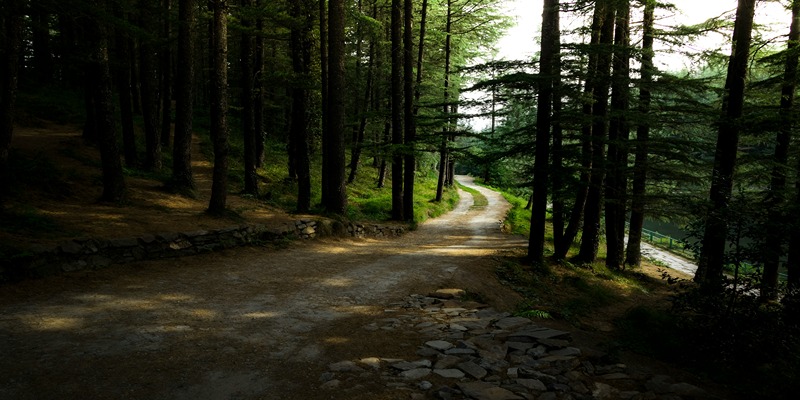Exploring India's Lesser-Known Historical Treasures
Feb 06, 2024 By Sean William
There are so many untold stories hidden in the historical gems of India. Far from the glory of famous monuments, there are hundreds of unrecognized locations that each tell stories about the past and lost civilizations. These off-the-beaten track travel spots, which are away from the common tourist routes, provide a more personal insight into India’s diverse historical background. Starting from the mysterious ruins in the North to the masterpieces of architecture in the South, each region hides its own historical jewels. This is a call to adventurers and enthusiasts of history to go on a journey of discovery, to unearth the hidden historical places of India, where history’s secrets have patiently waited for their turn to be revealed. 
The Quest for Unknown Historical Places in India
Finding the obscure historical locations in India is an inspiring voyage back in time that reveals the rich heritage of the country. India, and its millennia of history, is not only about the Taj Mahal or Rajasthan forts; it’s also about the untold stories that are hidden in its less visited corners. Every site, from ancient ruins hidden in the verdant landscape of the Northeast to temple ruins buried deep within time’s sands in remote villages, represents a fragment of India’s massive historical puzzle. This journey is not only a passage across lands but also an exploration of the past, unraveling the strata of history that determined what stands in the present. The brave traveler and history aficionado can engage with India’s heritage beyond the norms, unearth the depth and variety that lurk in its uncharted historical wonders.
Northern India’s Hidden Historical Destinations
Ancient Ruins Off the Beaten Path
The region of Northern India, which is endowed with a rich history, has old ruins that remain in the shadows of mystery, away from the usual tourist routes. These remains, located in isolated villages and camouflaged in thick forests, provide a peek into an age of prosperous civilizations. Structures such as the Bateshwar temple complex in Madhya Pradesh, a collection of 200 mini shrines, or the remnants of Nalanda University in Bihar, once an eminent center of learning, are proofs of India’s architectural and cultural glory. Visiting these sites gives one a unique feel as compared to the hustle and bustle of the crowded popular sites. It is a chance to walk through the pages of history alone, immersing oneself with the past in its purest form.
Lesser-Known Forts and Palaces
Apart from the renowned forts of Rajasthan and Delhi, there are hundreds of minor unheard of forts and palaces in Northern India that have their distinct history and architectural style. Such include the Ranthambore Fort that sits atop a hill and is surrounded by wildlife in Rajasthan, and the Gwalior Fort that holds imposing defensive structures with intricate carvings in Madhya Pradesh. These forts and palaces are not as famous but are no less grand. They provide a more contemplative, less noisy experience of India’s royal past. To visit these places is like discovering chapters which are hidden in the history of India, the lives of those who trod the corridors of power so long ago. Each fort and palace is a mute spectator of the unruly past, wars and love stories that influenced the region, urging tourists to peep into the pages of time.
Southern India’s Undiscovered Historical Sites
Temples and Architectural Marvels Beyond the Famous Ones
South India is known for its Dravidian architecture and it houses thousands of temples and architectural wonders apart from the popular names. Architectural marvels, yet relatively unexplored temples are hidden in the secluded parts of Tamil Nadu, Andhra Pradesh, and Karnataka. The Airavatesvara Temple in Darasuram, a UNESCO World Heritage site, is the best example of the Chola dynasty’s fine art. Likewise, the Lepakshi Temple in Andhra Pradesh has amazing murals and a floating pillar that represents characteristic Vijayanagara architecture style. These temples are not only religious monuments but a history and art collections that demonstrate the cultural and architectural wealth of the South. Visiting these sites, one feels immersed in a sense of peace, yet a profound one, away from the throngs of people where one can truly appreciate the artistry and age-old significance of these buildings.
Unveiling the History of Secluded Coastal Towns
The coastal belt of Southern India is dotted with secluded towns and villages, each with a history waiting to be uncovered. These towns, often overshadowed by more prominent destinations, offer a glimpse into the maritime history and colonial past of the region. Towns like Tranquebar (Tharangambadi) in Tamil Nadu, with its Danish colonial architecture, and the ancient port city of Muziris in Kerala, are steeped in a rich blend of indigenous and foreign influences. The remnants of forts, ancient churches, and historical trade centers in these towns tell stories of bygone eras when they were bustling trade hubs. Exploring these coastal towns is like peeling back layers of history, revealing the untold tales of trade, colonialism, and cultural exchanges that shaped the identity of Southern India.

Eastern India: Exploring the Heritage of the Less Explored
Hidden Gems in West Bengal and Odisha
Hidden historical treasures are in Eastern India, especially in states such as West Bengal and Odisha. Though less known, towns like Murshidabad and Bishnupur in West Bengal are endowed with historical wealth of terracotta temples and royal heritage. The lesser-known Buddhist sites of Odisha such as Ratnagiri and Udayagiri provide glimpses into the ancient Buddhist culture and architecture. Although not as popular as Puri or Kolkata, these places give a peaceful and deep insight into the history of Eastern India mixing religious and royal heritage.
Northeast India's Forgotten Historical Sites
Northeast India, which is more often left uncharted in the mainstream historical narrative, has many forgotten historical sites that tell of a rich cultural history. Other states such as Assam and Meghalaya have historical sites including the remains of the Ahom Kingdom in Sivasagar and medieval stone bridges in Meghalaya. These sites, tucked away in the verdant landscapes of the region, provide a rare insight into the diverse tribal cultures and historical kingdoms which once flourished here. Investigating these regions does not only develop the perception of India’s multifaceted legacy but also emphasizes the need to protect these little known places.
Western India’s Secret Historical Treasures
Western India, which is famous for its rich culture and beautiful scenery, also contains little-known historical wonders that tell of a forgotten past. In Gujarat, the ancient stepwells such as Adalaj and the ruins of Dholavira narrate tales of innovative construction and old civilizations. Likewise, the lesser known rock-cut caves of Ellora and Ajanta, though recognized as UNESCO world heritage sites, are still overshadowed by other more famous tourist spots. These sites, filled with historical and architectural beauty, provide a peaceful investigation into the depths of India’s past away from the busyness of tourists revealing hidden majesty of Western Indian heritage.
Conclusion
The history of India is a box of untold stories and hidden gems waiting to be revealed. From the abandoned ruins in the North to the age-old temples of the South, from hidden heritage in the East to hidden treasure in the West, all regions are characterized by a peculiar aspect concerning their past. These unsung sites are not just places; they are living epics of India’s glorious legacy. Such hidden historical destinations allow us to get in touch with the country's diverse history and deepen our understanding and love for this land of contrasts and paradoxes.







